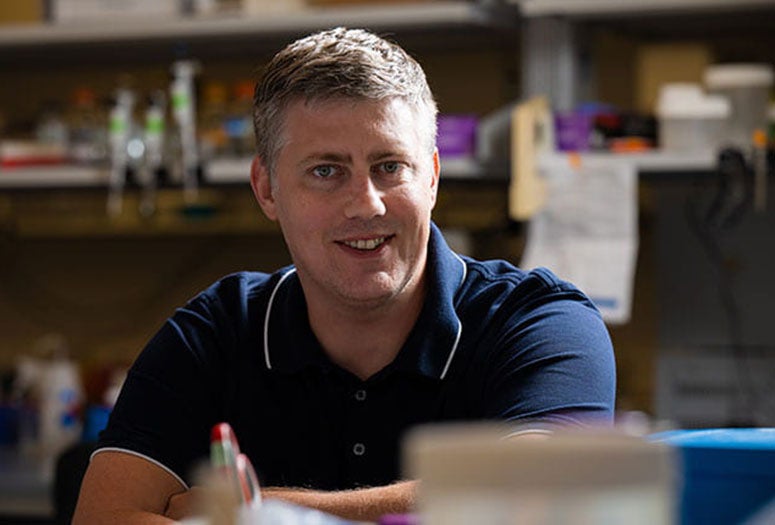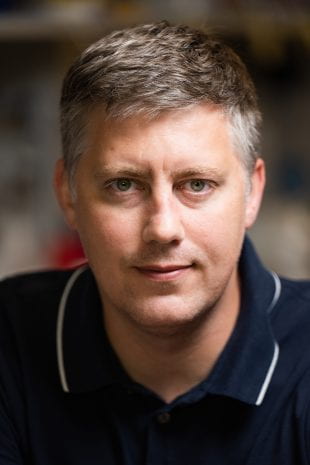HOUSTON – (Aug. 23, 2021) – Viruses come in many flavors, and Rice University bioengineer Isaac Hilton has long been fascinated by the kind that take control of cells without rewriting their genetic code.
"Some non-integrating episomal DNA viruses have evolved sophisticated ways to hide inside human immune cells without altering our DNA," said Hilton, a geneticist, synthetic biologist and cellular engineer. "These types of viruses can exist as circular minichromosomes that we call episomes, and some of these viral episomes can silently persist in human immune cells for a person's entire life."
In addition to helping viruses hide from the immune system, those circles can produce molecules that viruses use to hijack host cells and alter their behavior. But as their name implies, non-integrating episomal DNA viruses accomplish their takeover without making permanent changes to their host's genome. From an engineer's perspective, Hilton said the ability to program immune cell behaviors and safely erase that programming when it is no longer useful or necessary "makes these viruses very attractive for use in gene- and cell-therapy platforms."
That's why he's teaming with Baylor College of Medicine immunologist and infectious disease expert Dr. Andrew DiNardo to create a new platform technology for cell and gene therapies. The project is funded by a prestigious Trailblazer Award from the National Institutes of Health.
"Our goal on this project is: Can we hijack the hijackers to safely and reversibly program medicinal functions in human cells?" Hilton said.
"We know these viruses can get into human cells and temporarily rewire them using genetic circuitry to balance cellular behavior for the virus' benefit," he said. "Repurposing those mechanisms will add valuable technologies to the toolkits for gene and cell therapies, because permanent disruptions to our genetic code can sometimes lead to unpredictable and undesirable outcomes."
Hilton's team wants to show it can co-opt some of that viral circuitry to engineer control elements and interchangeable modules and deliver them into human immune cells in the form of synthetic circular DNA.
"We want to understand the design rules that will enable researchers to tightly and safely control how extra-chromosomal DNA – that is, DNA that's not embedded in our genomes – behaves in human cells," Hilton said of the three-year project, which is funded by National Institute of Biomedical Imaging and Bioengineering.
"We also want to leverage safe and well-established testbed systems to build sense-and-respond modules and control therapeutic functions in immune cells in response to drugs or other environmental cues," he said. "These types of systems can lay the foundations for new ways to predictably engineer human cells without disrupting any natural human DNA."
The technique builds on current gene therapies that use "tame" viruses to deliver genetic payloads to cells. The tame viruses, which are non-harmful to humans to begin with, are also programmed to be incapable of replicating. Hilton said there could be unique advantages to engineering such viruses to deliver non-permanent episomal programs.
Next-generation cell therapies that deliver non-permanent programming to immune cells could serve as diagnostic agents, drug production factories or sentries that guard against multiple diseases, Hilton said. These technologies will likely work best if bioengineers can find ways to deliver large genetic payloads that function in "orthogonal" ways, meaning they don't interfere with the day-to-day workings of the cell.
"We want to give biomedical scientists and clinicians new tools to precisely control large therapeutic genetic payloads in human cells," Hilton said. "Using extra-chromosomal genetic circuits can result in robust gene expression outputs and more predictable and safe programming of cells, which will be a big step toward harnessing cells to correct human diseases."
-30-
Read about the grant (R21EB030772) at:
https://reporter.nih.gov/search/WFaRrjFxjU-zJTUGMnrPBg/project-details/10303600
A high-resolution IMAGE is available for download at:
https://news-network.rice.edu/news/files/2021/07/0802_HILTON-9-lg.jpg
CAPTION: Isaac Hilton (Photo by Jeff Fitlow/Rice University)
This release can be found online at news.rice.edu.
Follow Rice News and Media Relations via Twitter @RiceUNews.
Located on a 300-acre forested campus in Houston, Rice University is consistently ranked among the nation’s top 20 universities by U.S. News & World Report. Rice has highly respected schools of Architecture, Business, Continuing Studies, Engineering, Humanities, Music, Natural Sciences and Social Sciences and is home to the Baker Institute for Public Policy. With 3,978 undergraduates and 3,192 graduate students, Rice’s undergraduate student-to-faculty ratio is just under 6-to-1. Its residential college system builds close-knit communities and lifelong friendships, just one reason why Rice is ranked No. 1 for lots of race/class interaction and No. 1 for quality of life by the Princeton Review. Rice is also rated as a best value among private universities by Kiplinger’s Personal Finance.


